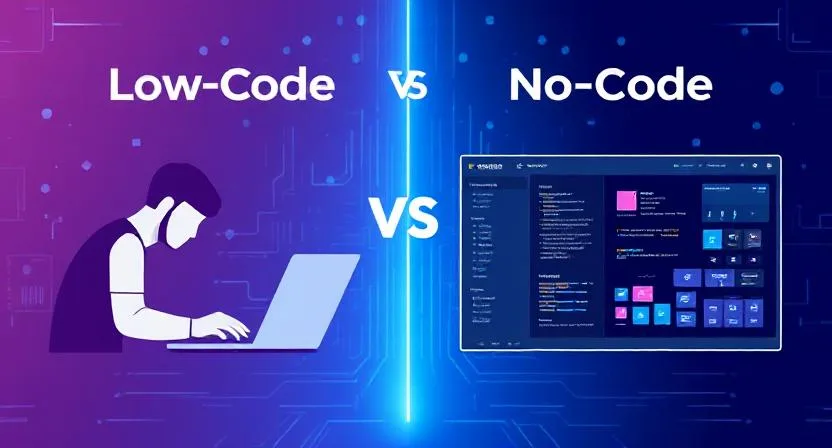The rise of low-code and no-code platforms has transformed the way businesses and individuals develop applications. These platforms empower users to create functional software solutions without extensive coding expertise. However, choosing between low-code and no-code depends on various factors, including business needs, technical capabilities, and scalability requirements. In this guide, we will break down the differences, advantages, and ideal use cases for each to help you determine which is best for you.
Understanding Low-Code and No-Code
What is Low-Code?
Low-code development platforms provide a visual interface that allows developers to build applications with minimal hand-coding. While some coding knowledge is required, these platforms significantly reduce development time by offering drag-and-drop features and pre-built templates.
Key Features of Low-Code:
- Visual interface for application design
- Drag-and-drop components
- Minimal hand-coding required
- Integration with external systems and databases
- Scalability and customization options
Who Should Use Low-Code?
- Businesses looking to accelerate app development while maintaining some control over customization
- IT teams needing to streamline workflows and automate processes
- Developers who want to speed up coding without compromising flexibility
What is No-Code?
No-code platforms are designed for users with little to no programming experience. These platforms enable non-technical users to build applications using an entirely visual interface. No-code solutions rely on pre-built components and logic to create software without writing a single line of code.
Key Features of No-Code:
- 100% visual development interface
- No coding required
- Pre-built templates and automation tools
- Fast deployment
- Easy maintenance and updates
Who Should Use No-Code?
- Entrepreneurs and small business owners looking to create apps without hiring developers
- Marketing and sales teams needing workflow automation
- Organizations requiring quick, cost-effective solutions
Differences Between Low-Code and No-Code
| Feature | Low-Code | No-Code |
|---|---|---|
| Coding Required | Minimal | None |
| Customization | High | Limited |
| Scalability | High | Moderate |
| Target Users | Developers, IT teams | Business users, non-tech users |
| Speed of Development | Fast | Very fast |
| Flexibility | High | Low to Medium |
Advantages of Low-Code and No-Code
Benefits of Low-Code
- Greater Flexibility: Developers can tweak and customize applications to meet specific business requirements.
- Faster Development: Reduces the time required to build and deploy apps.
- Seamless Integration: Works well with existing business tools and third-party APIs.
- Improved Collaboration: Enables both developers and business users to contribute to the development process.
Benefits of No-Code
- User-Friendly: Non-technical users can create applications with ease.
- Cost-Effective: Reduces the need for expensive developer resources.
- Rapid Deployment: Applications can be built and launched within days.
- Encourages Innovation: Empowers employees to create solutions without technical barriers.
When to Choose Low-Code vs. No-Code
Choose Low-Code If:
- Your business requires custom applications with advanced functionality.
- You need to integrate with external databases or legacy systems.
- You have a team with some coding expertise.
- Security and compliance are a priority.
Choose No-Code If:
- You need a simple app quickly without technical complexity.
- Your team consists of non-developers who need to build internal tools.
- You want to automate routine tasks without IT intervention.
- Budget constraints prevent hiring a development team.
Use Cases for Low-Code and No-Code
Common Low-Code Applications
- Enterprise software and internal business tools
- Customer relationship management (CRM) applications
- Data processing and analytics tools
- Workflow automation solutions
- Mobile and web applications with advanced logic
Common No-Code Applications
- Simple website builders and landing pages
- Basic customer portals and self-service apps
- Task automation and workflow optimization
- Event management and scheduling apps
- Internal dashboards for business operations
The Future of Low-Code and No-Code
Both low-code and no-code platforms are evolving rapidly. Businesses are increasingly adopting these solutions to streamline operations and drive innovation. With advancements in AI and automation, these platforms will continue to improve, making app development more accessible than ever.
Trends to Watch:
- AI-Powered Development: Enhanced automation and intelligent assistance in app creation.
- Expanded Integration Capabilities: More seamless connections with existing software and cloud services.
- Increased Security Features: Stronger compliance and data protection measures.
- Enterprise Adoption: Larger organizations integrating these solutions into their digital transformation strategies.
Conclusion
Deciding between low-code and no-code depends on your specific needs and technical requirements. If you require greater flexibility and customization, low-code is the way to go. However, if speed and ease of use are your top priorities, no-code may be the better choice.
Both approaches offer significant advantages, allowing businesses to innovate without heavy reliance on traditional coding. By evaluating your goals and resources, you can choose the right platform to accelerate development and drive digital transformation.










